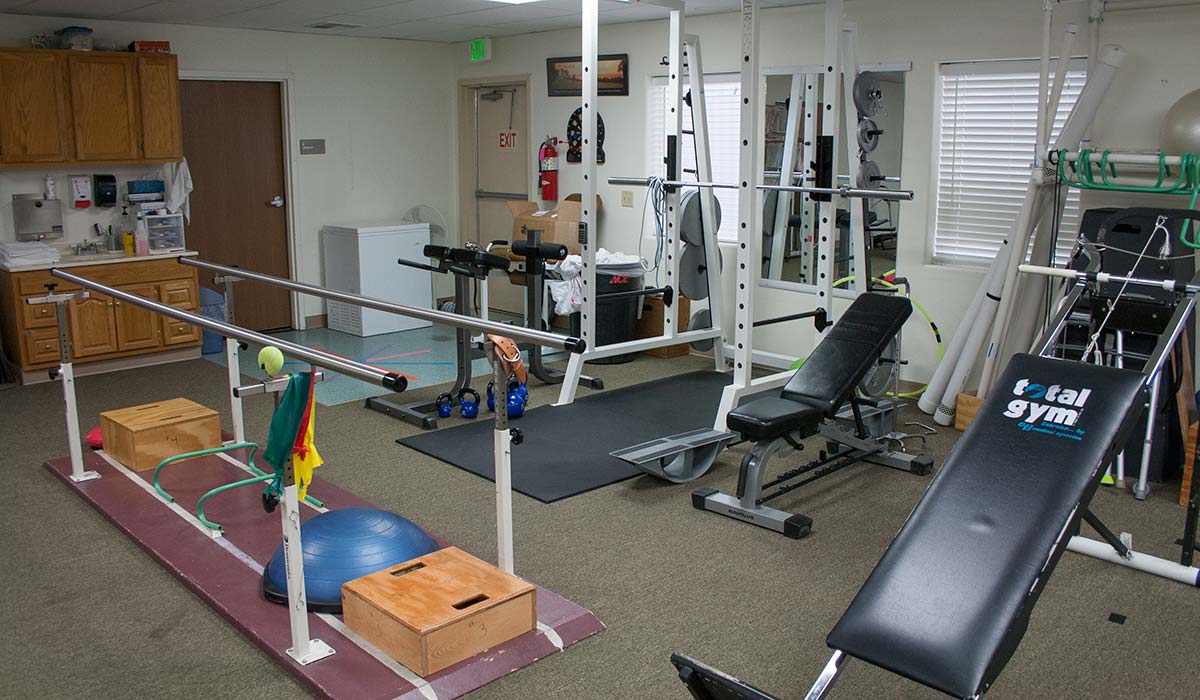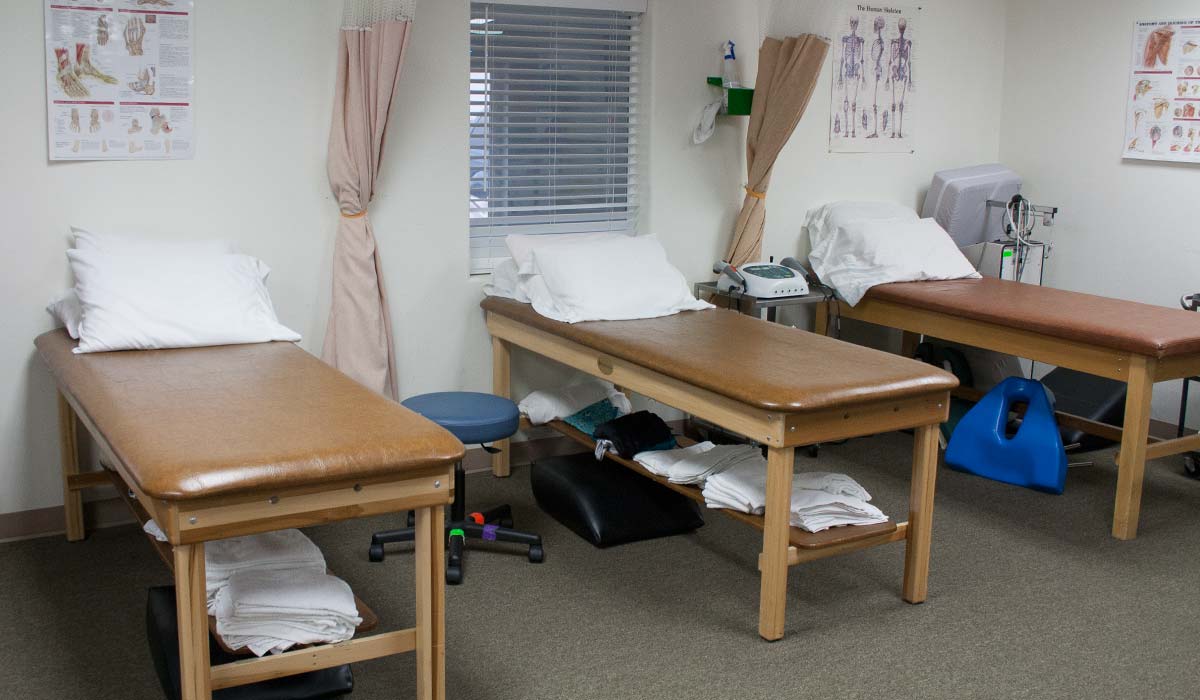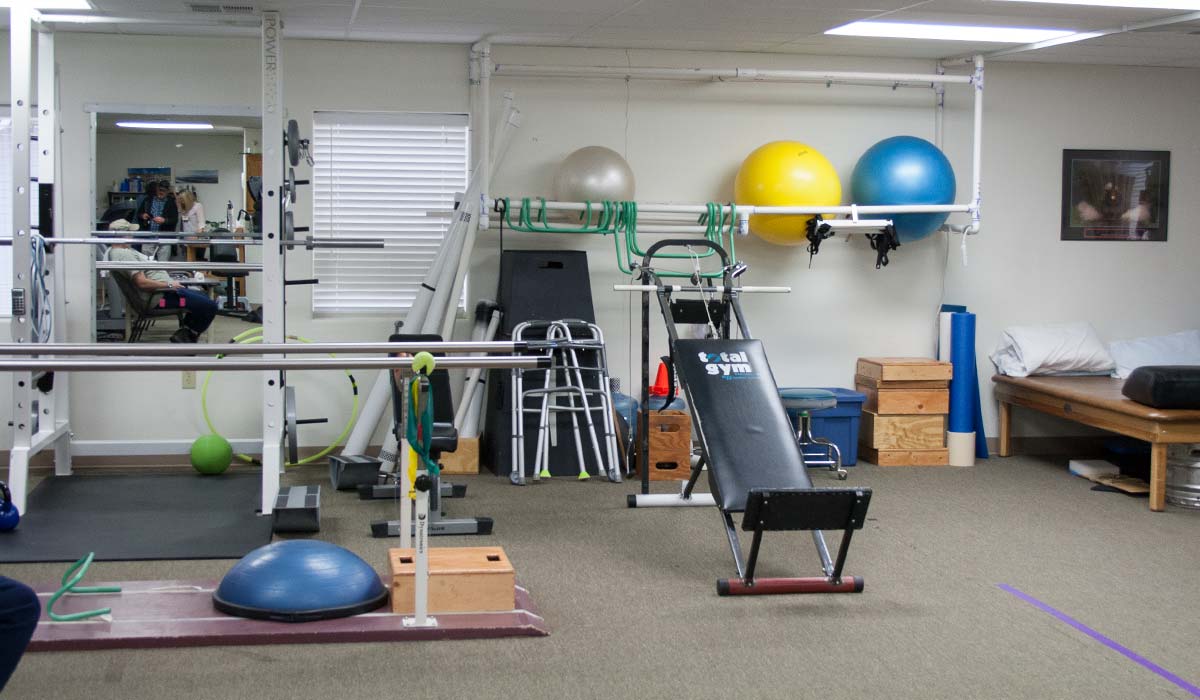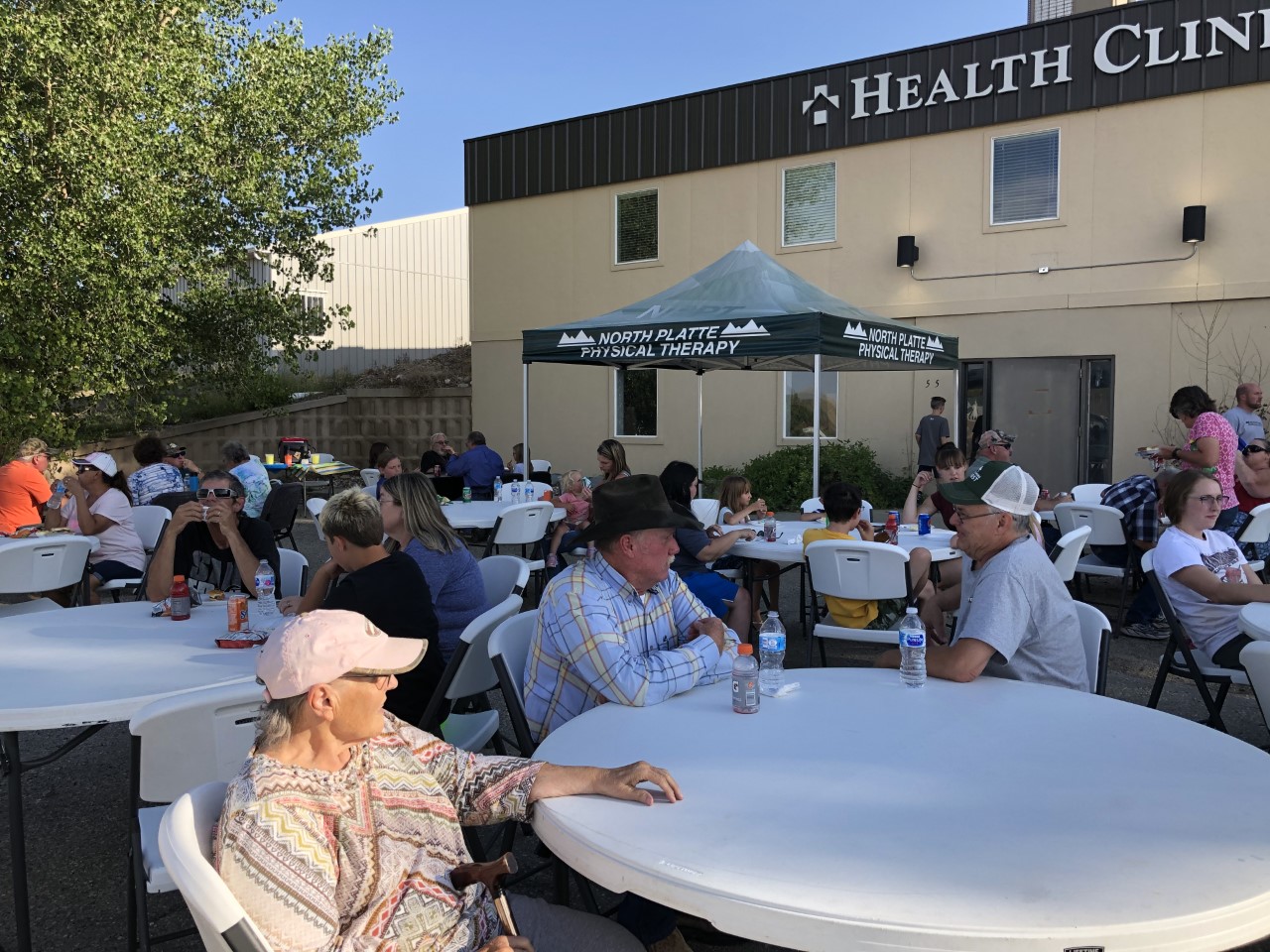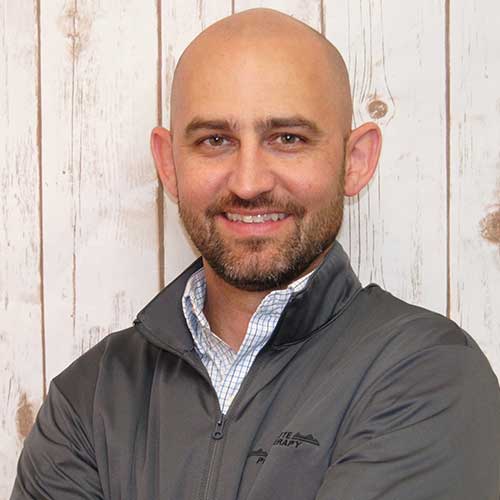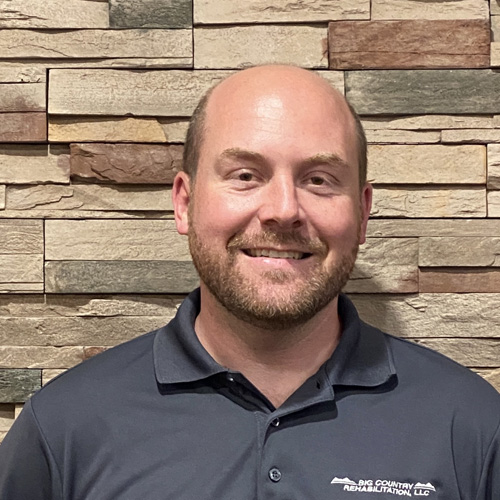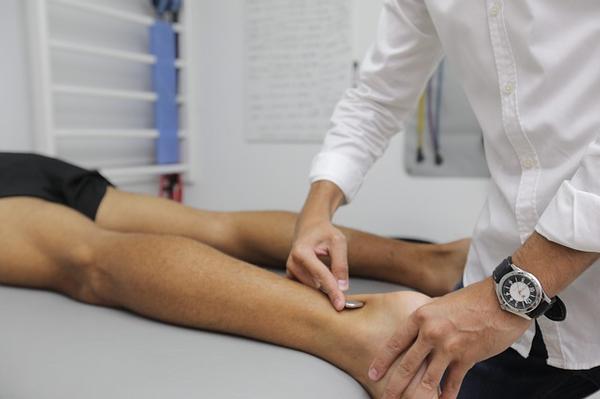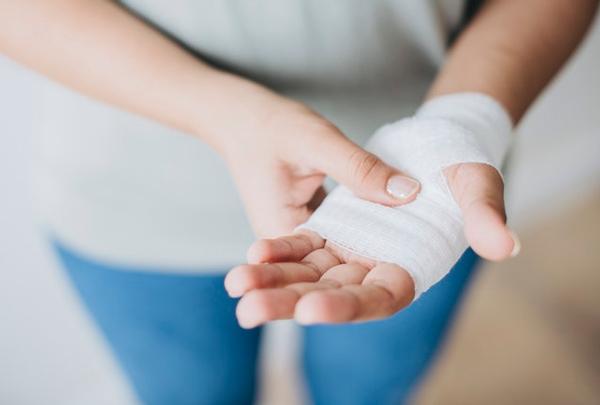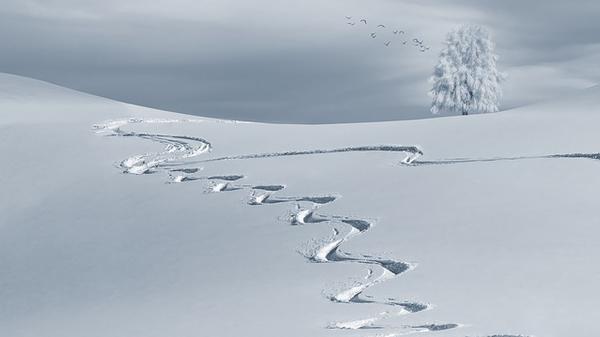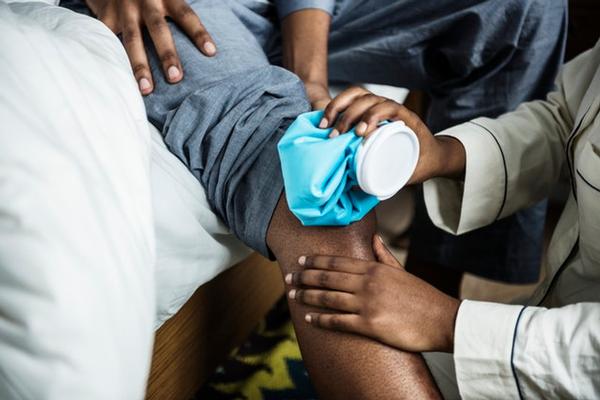Big Country Rehabilitation - Glenrock
Big Country Rehabilitation, LLC is located in Glenrock and is dedicated to providing a professional hometown atmosphere that incorporates current research-based intervention techniques individualized to your needs. We work closely with other healthcare providers in the community and surrounding area as part of your interdisciplinary team to ensure exceptional outcomes. We utilize community provided transportation to make it easier for you to access our clinic. As a member of the community, we are very excited to get the opportunity to work with the Glenrock high school by providing education experiences for students interested in pursuing a career in physical or occupational therapy.
Location Details
Hours: Monday 7:30-4:30, Tuesday 8:00-12:30, Wednesday 7:30-4:30, Thursday 8:00-12:30, Closed Friday
Fax: 307-436-8729
Services Offered
- Arthritis
- Back Pain
- Back School Presentations
- Balance and Vestibular Rehab
- Biofeedback
- Biomechanical Gait Analysis
- Body Mechanics Training
- Chronic Pain
- Cognitive Evaluations and Treatment
- Cupping Therapy
- Custom Foot Orthotics
- Custom Splinting
- Ergonomic and Worksite Evaluation
- Fine Motor Dexterity
- Graston Techniques
- Hand Therapy
- Headache
- Kinesio taping
- Modalities
- Myofacial Techniques
- Neck Pain
- Neurological Services
- Orthopedic Service
- Pediatric Therapy
- Post Cancer Treatment
- Pre/Post Surgical Rehab
- Return to Sport Exercise Programs
- Running Injuries
- Self-Care Skills
- Sensory Integration
- SFMA - Selective Functional Movement Assessment
- Spine Care
- Sports Medicine
- Stroke Rehabilitation
- Tendonitis
- TMJ
- Torticollis
- Trigger Point Dry Needling
- Vestibular Rehabilitation
- Women's Health
- Work Hardening/Conditioning
- Work Injuries
- Worksaver Certified Work Physicals
- Wound Care
Latest News & Info
Direct Access States for Physical Therapy in Casper, WY
December 5, 2018
What is Direct Access?Â
When it comes to direct access at the federal level, the government does not require a primary care physician to provide a referral for a person to seek out physical therapy. As of 2015, all 50 states, along with the US Virgin Islands, have a certain level of direct access—some more than others.Â
Three Levels of Direct Access
- Limited
- Access with provisions
- Unrestricted
Limited access allows patients to receive therapy under specific circumstances. This could be from a prior diagnosis or past referral. Only six states have limited access; the least amount in the country.Â
Access with provisions allows a person to be evaluated and treated by a physical therapist under certain provisions—more than limited access. For instance, there could be a time limit on care or specific therapy based on a physician’s suggestion. Access with provisions is what the majority of states allow, with 26 states total, plus Washington D.C. and the U.S. Virgin Islands.Â
Unrestricted access means a person does not need a referral from a doctor to receive therapy, nor do they require any provisions to be met. Currently, there are 18 states as of 2018 with unrestricted access to local physical therapy.Â
Wyoming’s Laws
Even though Wyoming falls in the “limited†access category, there are opportunities for people to receive care without a referral. Some of the provisions include:Â
- The person is 12-years-old or older
- Treatment for chronic pain or an ongoing conditionÂ
- A therapist must have a master’s degree and a minimum of five years clinical experience
All other circumstances outside of these parameters will require a physician’s referral.Â
Nebraska’s Laws
For those living in Nebraska, citizens have unrestricted access to physical therapy. This means no matter what the reasons or circumstances may be, a person will not need to get anything referring them to a therapist. This allows anyone to seek out care options. However, states like Nebraska with unrestricted access can only see a physical therapist for therapy and nothing outside of that realm.Â
As you seek out a top physical therapist to help address any of your needs, North Platte Physical Therapy has locations in rural Wyoming and western Nebraska. As your go-to source for therapy, our team will help you each and every step of the way to help you make a recovery and live a happier and healthier life. Contact us today to see how we can help you and answer any of your questions regarding your care.Â
TMJ Treatment Tips for Fall Allergy Flair-Ups
November 28, 2018
Allergies and TMJ Disorder
The TMJ is located in and around the same place as allergies. Sinuses line around the nose, between one’s eyes and along cheekbones. When working properly, sinuses stop bacteria from getting into the lungs. Allergies can cause those sinuses to swell or become infected. During the fall, many types of allergens in the air can confuse the body.Â
The immune system takes allergens like pollen or ragweed for invaders. To combat them, it causes all of the unwanted symptoms. All of this can make things even more painful for a person with TMJ disorder. Allergies can increase inflammation in problematic areas, worsening TMJ disorder symptoms. The key to relief is to combat allergies and take precautions to calm the TMJ.Â
Reducing Allergies
If you suffer from fall allergies, use some of these techniques for relief:Â
- Take an antihistamineÂ
- Reduce your time outside on days the pollen count is high
- Keep windows shut so outdoor allergens do not get inside
- Purchase a furnace filter that helps combat allergens in the air
- Wash your bedding regularly, using a hot sanitizing wash that will kill any allergens
- Use a dehumidifier to reduce moisture in the air that can harbor allergens
- Protect your eyes outside by wearing glasses instead of contacts or sunglasses
- Keep your house clean and do a routine dusting daily or almost every day
- Vacuum or sweep floors regularly
- If you spend the day outdoors, change immediately after you get home and preferably take a shower too (to rid yourself of allergens)
- Do not leave clothing or towels outside to dry
- Ask your doctor or allergist if you are an ideal candidate for allergy shots
TMJ Disorder Comfort
In addition to finding techniques that help you reduce or eliminate allergy symptoms, use these resources to reduce pain due to TMD:Â
- Do not eat foods that are overly chewy that cause an added strain on your jaw (steak, gum, crunchy foods, etc.)
- Depending which works better for you, use hot or cold packs on your face to reduce inflammation and calm muscles
- Use a mouth guard when you sleep to help you from clenching or bruxism
- Ask your doctor about anti-inflammatories and muscle relaxers to calm tense muscles
- See a physical therapist to learn what temporomandibular joint (TMJ) exercises relieve pain
As you seek ways to find relief for your TMJ pain while combatting fall allergies, Peak Physical Therapy & Wellness can help. Our staff is experienced in treating TMJ disorder, helping you to reduce swelling and pain. We strive to help you feel your best so you can perform best at work, home, and exercising. Contact Peak PT & Wellness Center closest to you today and schedule your appointment.Â
Knee Anthroscopy Explained by Physical Therapy in Cheyenne, WY
November 21, 2018
What is a Knee Anthroscopy?Â
A knee anthroscopy is a type of non-invasive surgical procedures to help relieve pain on and around the joint of the knee. The reason why it is called an “anthroscopy†is because a small camera, called an “anthroscope,†is placed into the knee after making a small incision. This is incision is just large enough to place a small camera through. From there, the surgeon can use special tools to go in and make various fixes to issues within the knee. It is also an excellent way to diagnose larger issues. The procedure itself is fairly quick and there are rarely common issues and complications. Knee anthroscopies are one of the top ways surgeons help those with knee issues thanks to their low risks and quick recovery time.Â
Common Reasons for Procedure
From there, a surgeon can review the inside of the knee and look for all types of issues, including:Â
- ACL reconstruction
- Bone fragments
- Cartilage issues or transfers
- Diagnosing larger issues such as arthritis
- Fractures
- Joint pain
- Patella repair
- Swelling
- Torn ligaments or meniscus
When going in for anthroscopic knee surgery, your surgeon will help make you comfortable. Given the nature of the surgery, it may often be a simple outpatient procedure that does not require an overnight stay in the hospital. By not having to open the entire knee to operate, you will enjoy being able to get back to your day-to-day routine in no time. Because it does not have as much stress on the knee as traditional surgeries, it is one of the best ways to treat an issue.Â
Using Quality Physical Therapy to Recover
Even though knee anthroscopy surgery is not as intense as a traditional open-knee procedure, it is best to work with a local physical therapist on your recovery and rehabilitation program. A physical therapist will create a customized plan specialized plan to help you regain proper movement. It is best to utilize a physical therapist as opposed to exercising on your own to help you with a successful recovery. Without the help of an expert, you could re-injure yourself or create more damage undoing all the work that was done.Â
Have you undergone a knee anthroscopy and are seeking a local physical therapist to help with recovery? Or planning for a procedure? North Platte Physical Therapy is your go-to physical therapist, experienced with common surgeries. We’ll create a customized plan for you to help to recover fast and avoid future injuries. Our experienced staff will create the perfect rehabilitation plan to help you get back to normal activities and movement. Contact us today to schedule an appointment near you.Â
Things to Consider When Exercising in the Cold Weather from Your Casper Physical Therapist
November 14, 2018
Warm Up Before You Workout
Ok, so you probably are already aware of the importance of warming up before you begin an intensive exercise routine. Regardless of what the activity is, warming up before you workout is an essential component of preparing your body for physical activity. Warming up can prepare your lungs, heart, and muscles for a more strenuous phase during a workout. Muscles that are warmed up are able to both contract and relax faster, reducing the possibility of muscle injury.Â
All of these factors become even more important to your physical health during cold weather, as the possibility of injury can increase with colder weather, especially for individuals who choose not to warm up. Getting your body to an ideal temperature during colder months can take a little bit longer, as you will be starting under cooler conditions. Finding the right warm up for your specific outdoor activity can also improve your body’s readiness for working out.
Stay Warm and Dry
If you’ve taken the necessary measures to warm your body up, another critical aspect of preparing yourself for outdoor physical activity during colder months is to stay warm. The importance of having proper clothing for your specific activity is crucial if you are to prevent serious injury and conditions such as frostbite and hyperthermia from occuring. If you are traveling away from your home a considerable distance, make sure to bring additional layers of clothing with you as a precautionary measure.
Consider purchasing clothing which will help keep you warm without restricting your movement or mobility. Athletic apparel has made significant strides in recent years to improve the ability to keep individuals warm without burdening them with excessive weight. It may take a degree of trial and error to figure out what the right amount of layers are for your particular activity, as having to shed layers every time you work out can be an irritating hassle to deal with.
Another important aspect to working out outside is to remain as dry as possible. If your activity involves some level of contact with snow or water, you will want to invest in clothing that is waterproof and specifically designed to keep you as dry as possible. Look into clothing that has moisture-wicking technology as a way to prevent your body from becoming excessively wet. Staying dry is key to remaining warm, as a wet body will keep you colder. This can not only make your workout miserable, but can leave you vulnerable to more serious health detriments.Â
Hydrate Yourself
During the warmer months of the year, staying hydrated is obvious and apparent to anyone who is exercising, as they will not only need water for hydration but will be motivated to drink more for cooling purposes. During the winter, it can be easy to forget about drinking plenty of water, as the cooler weather will give a person much less motivation for hydrating themselves. However, this can be a dangerous trap, as you will still need an ample amount of water if you are exerting yourself physically.Â
If you are heading to the mountains for your preferred physical activity, always bring enough water for your workout. Having too much water is never a problem, as you may surprise yourself with how much you will need to consume to maintain your optimal hydration levels. If you are going on a long hike, trail run, or are engaging in backcountry skiing, consider investing in a water storage device that will allow you to take it with you without sacrificing your performance levels. Devices such as a water bladder and pack can be the perfect option for athletes seeking to remain prepared without losing a step.
Monitor Weather Conditions
If you are heading into the mountains for your particular physical activity, it is especially important to monitor current weather conditions as a way to prepare for your activity. If you are an avid skier or snowboarder, a fresh foot of snowfall will be just what you are looking for. However, if you were seeking to take a winter hike on your preferred mountain trail, excessive snow can make your hike an undesirable or impossible feat.Â
Staying ahead of the weather can be key to maximizing your time, as you certainly don’t want to waste a day due to weather conditions. Safety should always be your top priority in every situation when it comes to exercise, and you should never sacrifice safety for the possibility of a good workout. Invest in proper gear and make sure your vehicle is ready for winter driving in the mountains prior to leaving home.
If you are looking to improve your physical health situation and are in need of physical therapy due to an accident or other physical ailments, contact North Platte Physical Therapist today and we will be happy to assist you with your first steps towards recovery. We have an extensive team of qualified physical therapists and specialists who care deeply about their clients and go above and beyond the call of duty to provide the highest quality treatment in the industry. If you are looking for a therapist who will carefully assess your individual needs and formulate a treatment plan that is specifically tailored to your needs, Peak Physical Therapy and Wellness is your preferred choice for the physical recovery process.
Knee Anthroscopy Explained by Physical Therapy in Cheyenne, WY
November 7, 2018
What is a Knee Anthroscopy?Â
A knee anthroscopy is a type of non-invasive surgical procedures to help relieve pain on and around the joint of the knee. The reason why it is called an “anthroscopy†is because a small camera, called an “anthroscope,†is placed into the knee after making a small incision. This is incision is just large enough to place a small camera through. From there, the surgeon can use special tools to go in and make various fixes to issues within the knee. It is also an excellent way to diagnose larger issues. The procedure itself is fairly quick and there are rarely common issues and complications. Knee anthroscopies are one of the top ways surgeons help those with knee issues thanks to their low risks and quick recovery time.Â
Common Reasons for Procedure
From there, a surgeon can review the inside of the knee and look for all types of issues, including:Â
- ACL reconstruction
- Bone fragments
- Cartilage issues or transfers
- Diagnosing larger issues such as arthritis
- Fractures
- Joint pain
- Patella repair
- Swelling
- Torn ligaments or meniscus
When going in for anthroscopic knee surgery, your surgeon will help make you comfortable. Given the nature of the surgery, it may often be a simple outpatient procedure that does not require an overnight stay in the hospital. By not having to open the entire knee to operate, you will enjoy being able to get back to your day-to-day routine in no time. Because it does not have as much stress on the knee as traditional surgeries, it is one of the best ways to treat an issue.Â
Using Quality Physical Therapy to Recover
Even though knee anthroscopy surgery is not as intense as a traditional open-knee procedure, it is best to work with a local physical therapist on your recovery and rehabilitation program. A physical therapist will create a customized plan specialized plan to help you regain proper movement. It is best to utilize a physical therapist as opposed to exercising on your own to help you with a successful recovery. Without the help of an expert, you could re-injure yourself or create more damage undoing all the work that was done.Â
Have you undergone a knee anthroscopy and are seeking a local physical therapist to help with recovery? Or planning for a procedure? North Platte Physical Therapy is your go-to physical therapist, experienced with common surgeries. We’ll create a customized plan for you to help to recover fast and avoid future injuries. Our experienced staff will create the perfect rehabilitation plan to help you get back to normal activities and movement. Contact us today to schedule an appointment near you.Â
